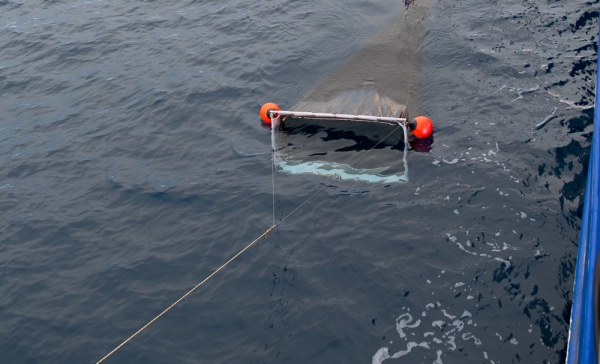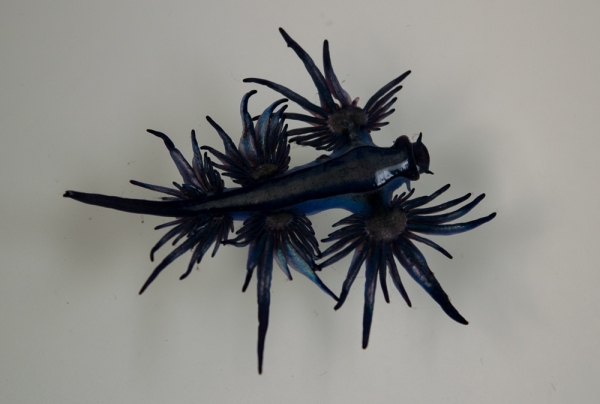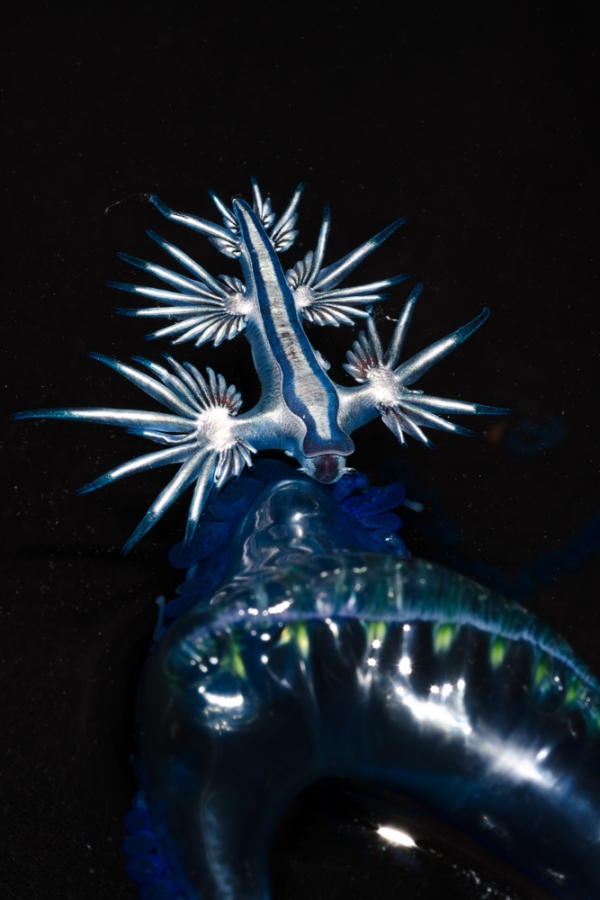We’ve been sampling at Macauley Island for a couple of days now, but before we left Raoul and headed south, we deployed a surface plankton net at dawn.
Using a 2x1m rectangle net we collected all sorts of animals that live at the surface of the ocean, providing food sources for seabirds, fishes and other animals.
During this plankton tow we picked up some beautiful specimens of the bright blue nudibranch Glaucus sp., commonly known as sea swallows or sea dragons.
These specialised frilly blue nudibranchs spend their life living on the surface of the ocean and form part of the plankton called the neuston. They are associated with siphonophores such as the blue By the Wind Sailor (Velella velella) and Bluebottle jellyfish (Physalia), and the violet snail Janthina which were described by Sir Alistair Hardy, an early pioneer of plankton science, as the “Blue Fleet”.
The blue and white colour to their bodies is part of their camouflage: silvery white underneath so predators can’t see them from below against the backdrop of the sea surface, and blue on top so that predators can’t see them from above.
Glaucus float in the surface tension of the ocean using their webbed appendages to increase surface area. They travel around with the currents and winds and can occasionally wash up on mainland beaches. Their mouth is pointing upwards and they feed on Physalia, the Portuguese Man’o’War or Bluebottle jellyfish. They store the nematocysts (stinging cells) from the jellyfish into their bodies. So if you ever happen across one please don’t pick them up as they can give a nasty sting… look but don’t touch!
Reference:
www.seaslugforum.net/factsheet/glauatla



